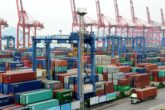August 10, 2018
How South Korea’s ‘New Economic Map’ Could Shift Northeast Asia’s Balance of Power
Since assuming office in May 2017, South Korean President Moon Jae-in is proving to be nothing short of a visionary. But the flurry of summitry surrounding North Korea’s nuclear program since the 2018 Winter Olympics in PyeongChang has overshadowed an equally ambitious plan that has been brewing in the Blue House for building toward peaceful reunification of the two Koreas.
Moon’s proposition is a simple, yet potentially transformative one: create a railway system that connects South Korea and North Korea to Russia, China, and Europe. The goal is not simply to alter Pyongyang’s strategic calculations with regard to its still-active nuclear and related weapons programs but to turn the Korean Peninsula into a new growth engine for Northeast Asia. This could fundamentally alter the Northeast Asian regional balance of power, positioning North Korea as a critical node that connects East Asia to Eastern and Central Europe.
Moon’s economic plan is not without precedent. Previous South Korean presidents, including Kim Dae-jung with his original Sunshine Policy, envisioned a phased process toward reunification that included economic and rail links between the Koreas. The 1994 Agreed Framework between the United States and North Korea sought to provide Pyongyang a measure of energy security, first through the provision of heavy fuel oil, then through two light-water nuclear reactors. And Russian governments have, for the past decade, called for completing gas pipeline projects that run through North Korea and connecting rail transit across the Eurasian continent.
But the historic Trump-Kim summit in Singapore breathed new life into Moon’s so-called “New Economic Map of the Korean Peninsula,” which he most recently showcased at the 42nd annual Singapore Lecture in July. The two most striking features of this new regional connectivity vision focus on energy and overland transportation. Specifically, Moon envisions the construction of a trans-Korean gas pipeline that would bring Russian gas through North Korea down to South Korea’s industrial hubs, as well as a railway system to link Seoul to Kaesong, Pyongyang, Nampo, and Sinuiju in North Korea — and on to Dandong and Beijing in China. From Beijing, the Trans-Mongolian and Trans-Siberian railways could then make it possible to transport overland freight from South Korea’s southernmost coastal cities all the way to Europe.
Read the Full Article at The Diplomat
More from CNAS
-
Ziemba: Struck By Energy Deal Between India & Saudi Arabia
Saudi Arabia and India have agreed to deepen energy ties and cooperate more closely on tourism and technology as the countries seek to strengthen relations at a time of turbul...
By Rachel Ziemba
-
Trump’s Crackdown on Foreign Students Is a Gift to China
When top global talent no longer sees America as a stable, long-term bet — in light of both visa and research funding insecurity — many will vote with their feet....
By Jordan Schneider
-
Trump Administration Realises That The Tariff Strategy Has Backfired: Lisa Curtis
Trump administration realises that the tariff strategy has backfired, says Lisa Curtis, senior fellow and program director at the Center for a New American Security.Watch the ...
By Lisa Curtis
-
Ep 187: Richard Fontaine on the “Reverse Kissinger”
Richard Fontaine, CEO of the Center for a New American Security (CNAS) and co-author of No Limits? The China-Russia Relationship and U.S. Foreign Policy, joins the show to dis...
By Richard Fontaine




